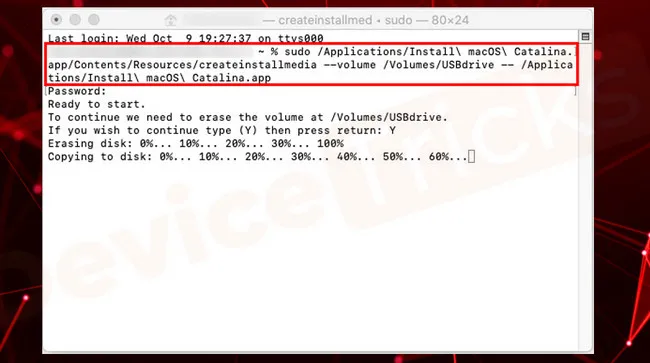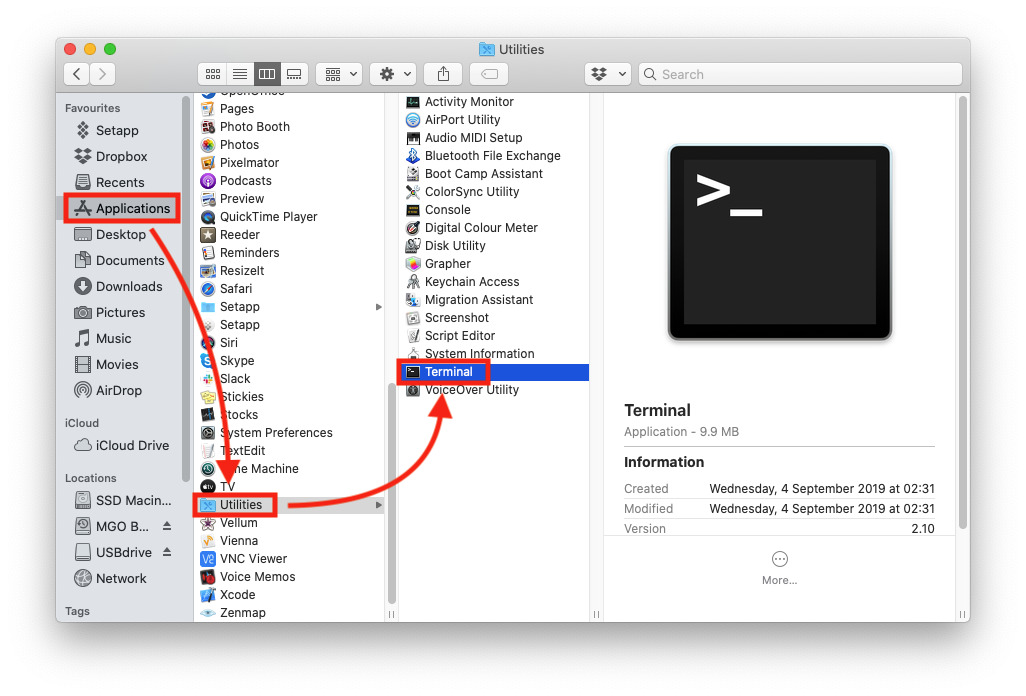Back in March, I authored a post on using DeployStudio to image the latest macOS releases that utilized APFS formatting. With the release of Catalina, I had figured this method of preparing machines would end. This is because of Catalina’s unique method of partitioning the APFS container into multiple sections, including both a read-only system volume and a writeable data volume. However, thanks to an updated version of AutoDMG, DeployStudio lives again.
- Clover Boot Disk Creator Catalina
- Telecharger Install Disk Creator Catalina
- Install Disk Creator Catalina

Step Three: Create macOS Catalina Bootable USB Installer in Windows on Terminal. The USB installer has now been formated, it’s time to create and copy the installer with a command on Terminal. For this purpose, open Spotlight and type Terminal. Mac Os Disk Creator free download - Apple Mac OS Update 8.6, Apple Mac OS X Snow Leopard, Apple Mac OS Update 8.1, and many more programs. Then follow these steps to create your bootable macOS Mojave drive. Connect your drive to your Mac. Launch Install Disk Creator. In the main window, you’ll see a pop-up menu under. If one is already running macOS Catalina, just open Terminal and use the following command to download the latest release of macOS: Or to download a specific version, even older, use e.g.: To create a USB installer, then in Terminal use the createinstallmedia command, e.g.: See How to create a bootable installer for macOS for details. However, there are many ways to create a macOS USB flash drive installer like Disk Creator but the easiest way to create macOS Catalina bootable USB is using Terminal, which you don’t need to install and additional software. But before moving to our main topic, let’s have some piece of information about macOS Catalina, macOS Catalina.
Clover Boot Disk Creator Catalina
As far as the steps to deploy an APFS image to a machine using DeployStudio, refer to the other article, nothing has changed. Also, remember that this will not work on machines with a T2 chip. The writing is on the wall; that being said, I still have a lot of non-T2 chip machines which makes this worthwhile.

The key here is using the latest beta version of AutoDMG (at the time of writing this, it is v1.10b587). According to the release notes, it supports creating DMGs of macOS Catalina. However, if you try and create a DMG like normal using AutoDMG, you’ll get an error suggesting that InstallInfo.plist is not present in the Catalina installer (which isn’t true). After reading through some of the reported issues with the latest beta, it was suggested that creating a DMG with the Catalina installer on it, then mounting said DMG and using the Catalina installer from that will resolve the issue. Here is what I had success with:
Telecharger Install Disk Creator Catalina
- First of all, make sure you’re performing this on a computer with plenty of free space. You not only have to download the full macOS Catalina installer, you also have to copy it onto a DMG, and then create the final deployable DMG. This will take up roughly 30 GB of storage, so be prepared.
- Download the latest version of AutoDMG (linked to above).
- Download DosDude’s Catalina Patcher Tool to aid in downloading a full macOS Catalina installer. Upon opening the Patcher Tool, you’ll want to click Continue until you see this screen and can click Download a Copy. If you try downloading Catalina from the App Store, you may get a partial installer app that won’t work with AutoDMG. Make sure to use the Patcher Tool. Once you have downloaded a full macOS Catalina Installer app, you can quit the Patcher Tool.
- The macOS Catalina Installer app should now be present in your ~/Downloads folder. Create a new folder (anywhere, probably easiest just in your Downloads folder) and place the Catalina installer inside of the folder.
- Open the Disk Utility application and navigate to Menu Bar > File > New Image > Image from Folder… I suggest not compressing the disk image, as I have had compression cause issues with mounting/cloning/copying in the past. You can change the Image Format from Compressed to Read-Only. Select the folder that the macOS Catalina installer is in (not the installer itself) and click Save. This will begin a process which creates a disk image with the macOS Catalina Installer on it. For some strange reason, this is what will resolve the error that AutoDMG throws up when trying to create a deployable Catalina disk image.
- After the disk image is created, mount the disk image. Open AutoDMG and drag the macOS Catalina installer app from the disk image onto AutoDMG (like usual).At this point, it’s business as usual. AutoDMG will create an image that you can copy to your DeployStudio repository and deploy to your Macs. Remember that you must select “First Disk Available” when deploying an APFS image in DeployStudio in order for it to work correctly.
Hopefully this helps someone! If you have non-T2 chip Macs that ever need re-imaging, and you happen to already have access to a DeployStudio server, it’s a no brainer. Thanks for reading!

Peace,
Install Disk Creator Catalina
Joel